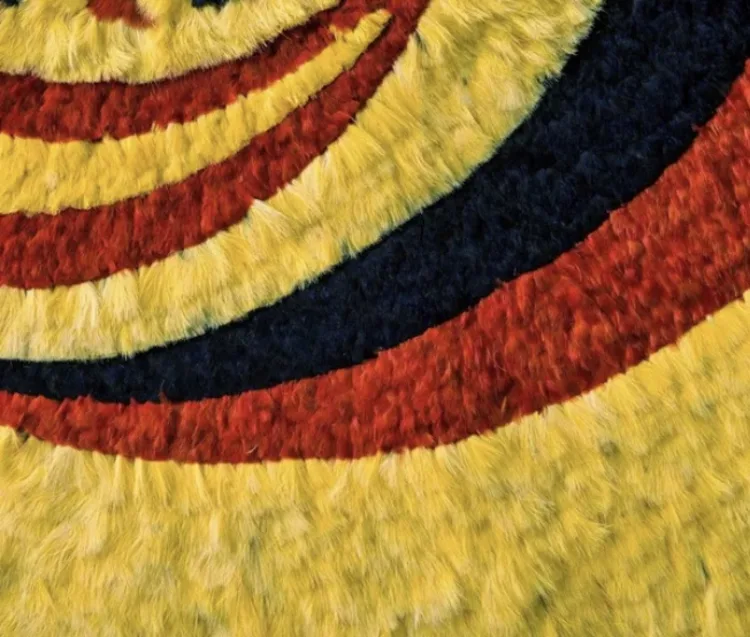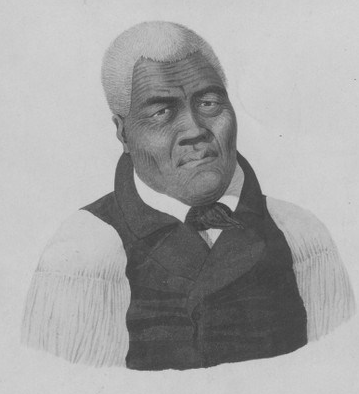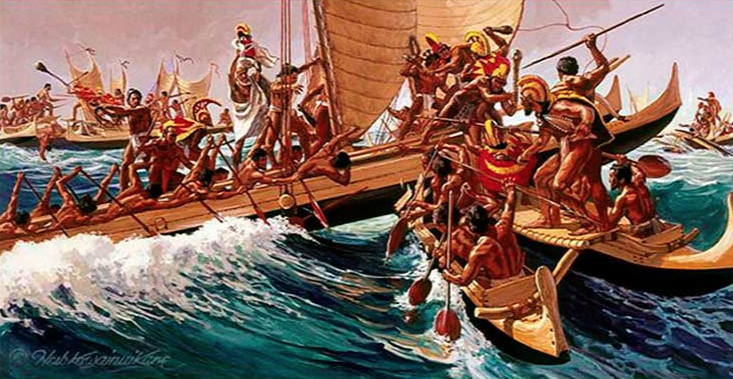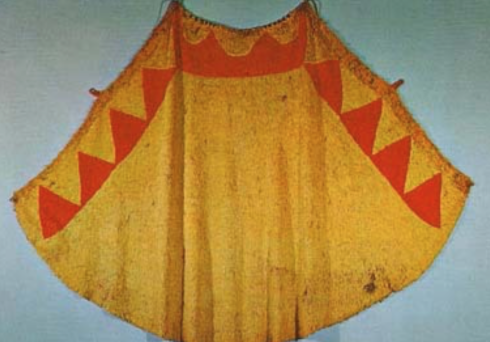William Pānui
No Kekūhaupiʻo

Mānaleo Series
These short clips of native speakers on Ka Leo Hawaiʻi talking about their lives and practices are invaluable windows into our past, our language, and ourselves. Our mahalo kūhohonu goes out to Larry Kimura and Puakea Nogelmeier for their foresight in preserving the voices of these hulu kupuna.
Listen and read along:
1. Press "listen in browser" or the orange arrow on the sound file below (make sure your sound is up).
2. Scroll down and read along in the language of your choice.
3. Repeat as needed.
4. Remember to select "listen in browser" to stay in this site.
William Pānui talks about Kekūhaupiʻo and the battle between Kamehameha and Kīwalaʻō
Larry Kimura (LK): Kūhaupiʻo, aihea kona kahua hale? Ua noho nō ʻo ia i Kona?
William Pānui (WP): ʻAe. ʻO Kekūhaupiʻo, hānau ʻo ia a noho ʻo ia ma Keʻei.
LK: Ma Keʻei nō?
WP: Ma Keʻei nō. A, lawe ʻia ʻo ia e nā kāhuna, [i] ka wā e hoʻomākaukau ʻia ana ʻo Kamehameha no ke kaua ʻana. A ʻo Kekuhaupiʻo, ʻo ia ke…ka ʻalihikaua o Kamehameha. Nāna i aʻo iā Kamehameha i nā hana kaua a pau. ʻAe, ʻo Kekūhaupiʻo, no Kona ʻo ia, no Keʻei.
I ke kaua ʻana ʻo Kamehameha me Kīwalaʻō, hele mai ʻo Kīwalaʻō mai ka ʻaoʻao o Hōnaunau a hiki i kēia wahi ʻo Keʻomo [Keomo] me Kīpū. Ia manawa, nui nā ulu niu o ia mau kahakai. I kona hele ʻana mai, luku ʻo ia i nā kumu niu me nā poʻe a pau e noho ana ma laila, luku ʻia a pau, a koe wale nō he ʻelima paha, ʻeono paha kumu lāʻau, kumu niu, e kū nei. Kēia manawa paha, ua make.

Artist rendering of Kamehameha I, Ka Naʻi Aupuni.
Unuhina (Translation):
Larry Kimura (LK): Kūhaupiʻo, where was the foundation of his home? Did he live in Kona?
William Pānui (WP): Yes. Kekūhaupiʻo, he was born and lived in Keʻei.
LK: In Keʻei?
WP: In Keʻei. He was taken by the kahuna, at the time when Kamehameha was being prepared to do battle. And Kekūhaupiʻo, he was the war strategist of Kamehameha. He taught Kamehameha all the skills of war. Yes, Kekūhaupiʻo, he was from Kona, from Keʻei.
When Kīwalaʻō fought Kamehameha, he came from the Hōnaunau side, to those lands Keʻomo [Keomo] and Kīpū. At that time there were many coconut groves along those shores. When he came, he laid waste to all of the coconut trees and the people who were living there, wasted them. There were only maybe five or six coconut trees left standing. But now they are probably gone.
"ʻO ka hele loa akula nō ia o Keōuakūʻahuʻula, a me Uhai, ke kahu, a me Kaʻieʻiea, ke keiki ho‘okama, me nā aikāne, a me kona mau koa a hiki ma Keomo, ma ka hikina hema iho o Keʻei, a ʻoʻoki ihola i ka niu a hina. ʻO ka moku ʻana o ka niu, ʻo ka hōʻailona ia o ke kaua. ʻO ka niu, he kanaka nō ia, wahi a ka poʻe kahiko, aia ke poʻo i lalo, a ʻo ka maʻi a me nā ʻōpeʻa, aia i luna; he aliʻi nīʻaupiʻo ka mea e hina ai ka niu."
- Samuel Kamakau
"Keōuakūʻahuʻula, his advisor Uhai, his adopted son Kaʻieʻiea, his close companions, and his soldiers went all the way to Keomo on the southeast side of Keʻei, where they cut down and toppled the coconut trees. The cutting of a coconut tree is a sign of war. The coconut is a man, according to the ancients; its head is below and its genitals and scrotum above; only the highest-ranking chiefs, the nīʻaupiʻo, could make a coconut tree lie down."
- Translation by Awaiaulu

Herb Kawainui Kāne - "The Battle of Mokuʻōhai"
He ʻĪnaʻi
William Pānui is the grandson of well known Kona native Louis Pānui who was recorded by Flora and Homer Hayes in 1951. He recounted the stories of these battles as he had learned them from kūpuna before him. These recordings are housed at the Bishop Museum today. When the doors are open, the public can access these sound files on listening stations.
Pānui is one of the greatest treasures on record and an absolute pleasure to listen to. Should you get the chance to visit the museum, look for call numbers HAW 19.1 - 19.3. Kekūhaupiʻo and the Kamehameha stories are only some of the MANY moʻolelo that this man held.
As we heard here, William Pānui gives only a brief statement about the famous battle, but it is still wonderful to hear it come from the mouth of a native speaker who learned it i ke alo kupuna - in the presence of his grandparent. That is a different form of transmission than the written word.
“Ko mākou wā ʻuʻuki, i nā ahiahi a pau, noho mākou me ia, hoʻolohe i nā moʻolelo kahiko.”
"When we were little, every evening, we would sit with him and listen to the old stories."
- William Pānui
It is interesting to note that both grandfather and grandson say Keʻomo (with an ʻokina), rather than Keomo, as the name is recorded in Place Names of Hawaiʻi. This is yet another reason that listening to these native speakers is important; variants in pronunciation can get lost in the flow of time.
Paper and ink, however, have their own magic for preserving stories. Much of our knowledge survived this way - printed in Hawaiian-language newspapers by writers and publishers who knew the service they were doing for future generations. While transmission of stories stopped in some families, the newspapers held many of them in good keeping and we are deeply privileged to have access to them today. Pōmaikaʻi!
Writers like Samuel Mānaiakalani Kamakau and Stephen Desha penned intimate accounts of Kekūhaupiʻo, how he became an incredible warrior, and how he trained Kamehameha to be the same. They also described the battle of Mokuʻōhai in stunning detail that would make for an amazing screenplay.
A new edition of Ke Kumu Aupuni, the first third of Kamakau's newspaper writings, with ʻōlelo Hawaiʻi and English side by side, will be published this year. It is a product of the translation training projects that have been happening over the last decade or more at Awaiaulu. Click here to learn more about this exciting text.

Kīwalaʻō's cape.
Na Hina Kneubuhl i kākau a hoʻonohonoho i kēia moʻolelo.
These pieces are all working interpretations. Should you see a kuhihewa, kiko hewa, or have any sort of manaʻo to share, please email kauamelemele@gmail.com - Mahalo!
Click here to access the full recording on Kaniʻāina.

Artist rendering of Kamehameha I, Ka Naʻi Aupuni.
Artist rendering of Kamehameha I, Ka Naʻi Aupuni.

Herb Kawainui Kāne - "The Battle of Mokuʻōhai"
Herb Kawainui Kāne - "The Battle of Mokuʻōhai"

The ʻahuʻula of Kīwalaʻō.
Kīwalaʻō's cape.
